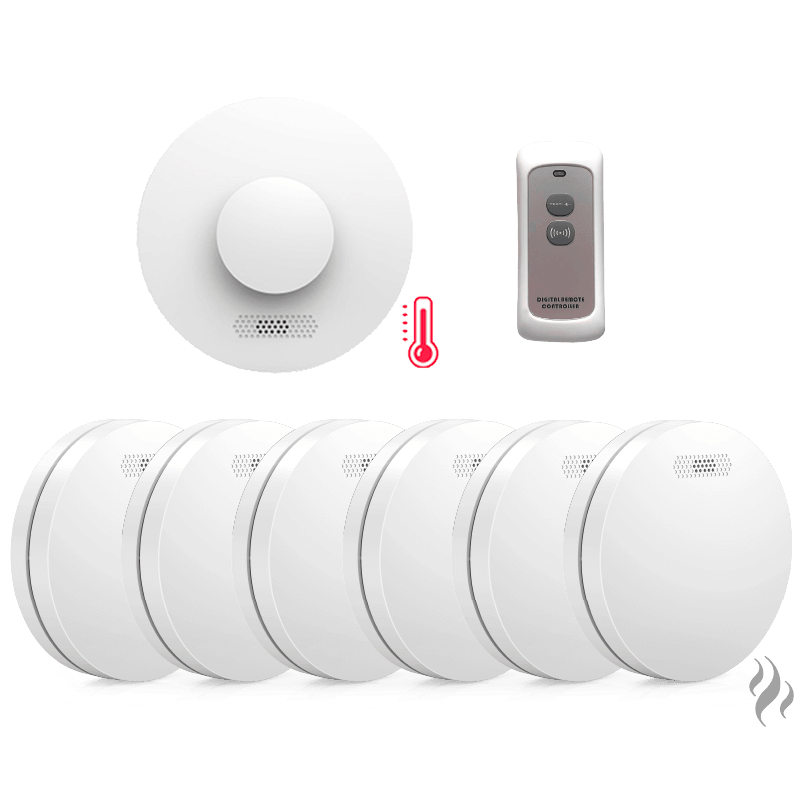I already have old fire alarms, are they safe to use?
If your home already has fire alarms fitted, you need to make sure they are interconnected one with each other, and that they are located in the required rooms as required for minimum standards. Please
click here to check our visual explanation of where your alarms must be located.
What type of alarms do I need to be compliant with new regulations?
To be compliant with the Scottish Legislation and to make your house a safe place you are required to install smoke and heat alarms which must be interconnected. If you have a carbon-fuelled appliance – like a boiler, fire, heater or flue – in any room, you must also have a carbon monoxide detector in that room, but this does not need to be linked to the fire alarms.
Why do fire alarms need to be interlinked?
Smoke and Heat Alarms are required to be interconnected. You may not hear the alarm closest to the fire but, by having an interlinked system, you will be alerted immediately in whatever room you are. The Carbon Monoxide Detector can be used as a standalone detector to reduce the risk of confusing fires and Carbon Monoxide leaks
How many alarms do I require in my home
The minimum protection standards requires one smoke alarm installed in the room most frequently used for general daytime living purposes; one smoke alarm in every circulation space on each storey, such as hallways and landings; one heat alarm in every kitchen; one carbon monoxide detector where there is a carbon-fuelled appliance, such as boilers.
For maximum protection we recommend to install one smoke alarm in every bedroom and additional day-time areas; one smoke alarm in converted lofts; one heat alarm in the garage and utility room. These additional alarms are not required by law, but do increase the fire safety of your home.
Do I need an electrician to install new fire alarms?
You can either call an electrician or install the alarms yourself. To avoid the extra cost incurred in fitting and re-decorations, the battery-powered alarms are the best solution for your home. Battery-powered alarms are fully compliant with the new Scottish Regulations.
I am a tenant in a privately rented property – how do I make sure my landlord complies?
As the new standards for fire and smoke alarms extend those which currently apply in the Private Rented Sector PRS to housing of all tenures, your landlord should already be complying. If this is not the case, you must contact your landlord immediately and ensure maximum protection to all the tenants in your home.
My home is all electric, do I need a CO detector?
If there is no carbon-fuelled appliances in your home, no CO detector is required.
Can I install fire alarm on the walls?
The upcoming laws require all smoke and heat alarms to be ceiling-mounted. In any case where it is not possible to mount a ceiling alarm, for instance due to asbestos concerns, battery-operated alarms that can be wall mounted may be used.
If you have asbestos and still wish to have your alarms ceiling-mounted, you can use strong adhesive pads supplied with our fire alarms.







